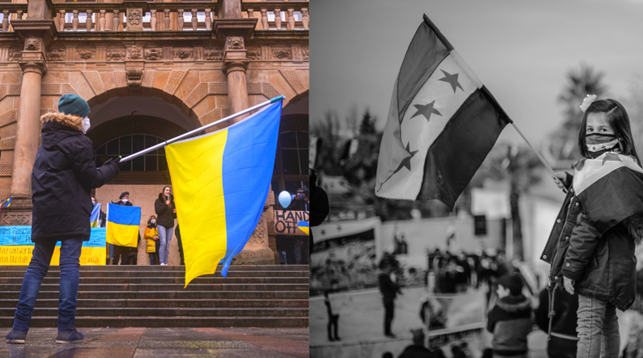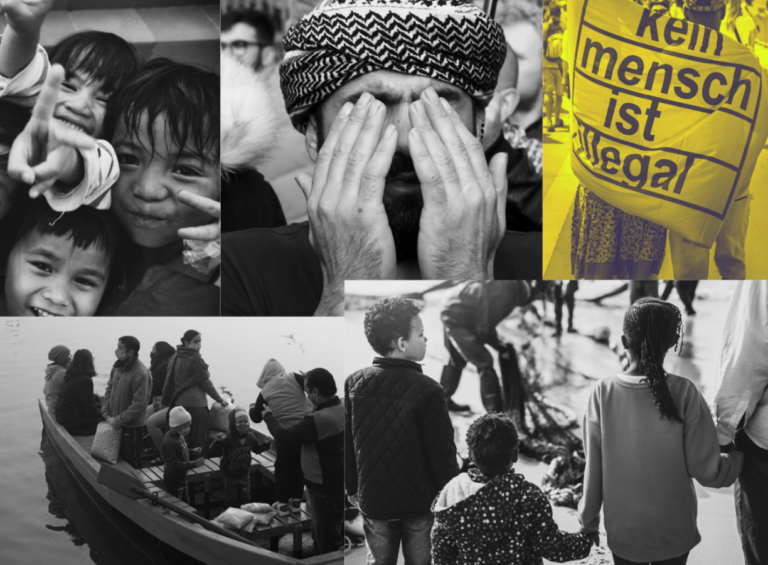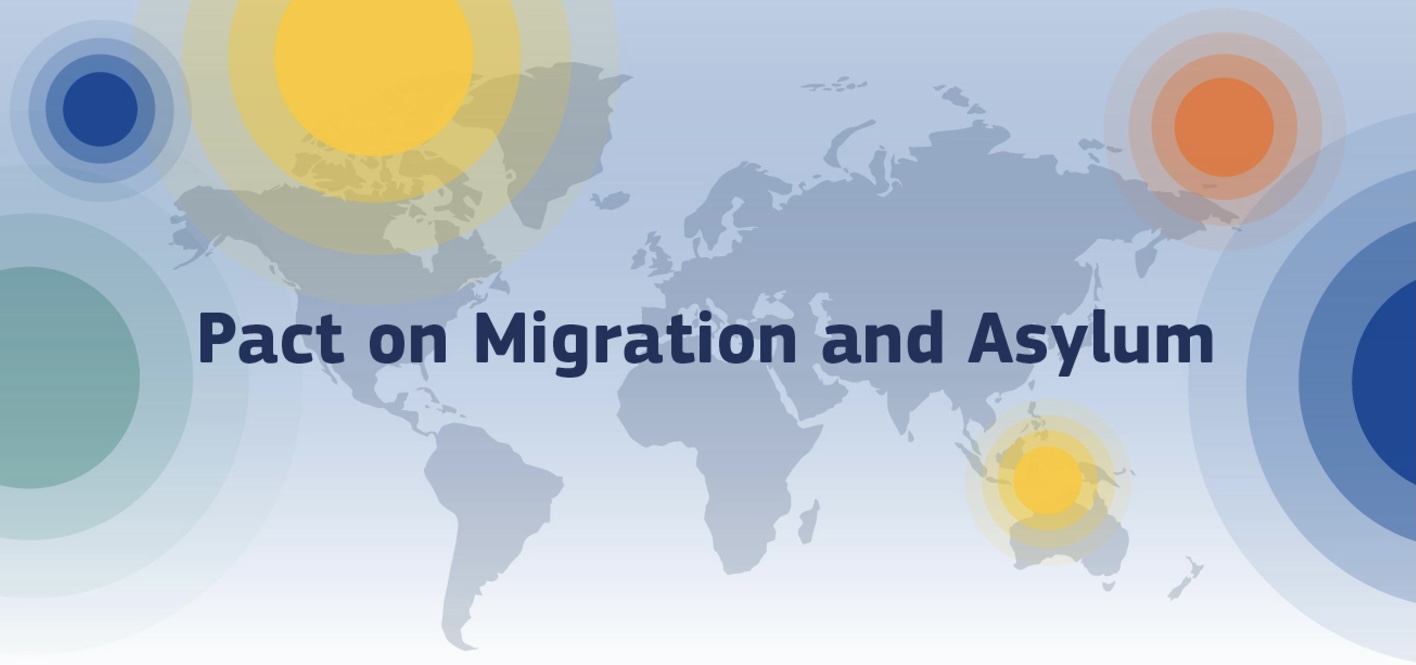By Martina Monti
- Assessing Ukrainian refugee wave in numbers
On 24 February 2022, Russia forces stormed Ukraine, carrying out attacks in the north and south-eastern part of the country[1]. Inevitably this brought about two subsequent effects; on one side, it launched an all-out military offensive in a supposedly post-conflict continent. This was accompanied with the strong rhetoric of “war returning to Europe”[2] after World War II. On the other side, it produced a severe refugee crisis, with millions of Ukrainians leaving the country and turning to Europe.

Via Unsplash/noah eleazar
During the first month of the invasion, around 150 00 Ukrainians would border cross daily to flee the war[3], whilst the total number of refugees is – generally speaking – estimated to be 4 million[4], not including internally displaced persons (IDP). As a matter of fact, this has prompted an immediate response from the European Union (EU) to manage the crisis.
Accordingly, the EU has activated the never-before-used Temporary Protection Directive (TDP) of 2001 which is “an exceptional measure to provide immediate and temporary protection in the event of a mass influx […] of displaced persons from non-EU countries who are unable to return to their country of origin” [5].
Basically, it grants refugees from Ukraine the right to live, work and access to public service in EU countries for three years[6].
However, despite the outstanding EU reaction to the migration crunch, there are still to date two unmet challenges: firstly, how to integrate Ukraine inflows taking into account its internal composition and secondly, how to interpret and sustain the new standard that the bloc response has set for future refugee emergency.
- Not everything is as it seems
To begin with, the configuration of Ukrainian influx is mainly composed by children, women and elderly people. This is because much of the working population was prevented from leaving the country due to the general mobilisation[7]. As a result, the majority of refugees are in need of extra care compared to other categories.
For instance, children with migratory background tend to be especially sensitive when it comes to integration in the education system. More than the language per se, the priority should be how to ensure a smooth welcoming process[8] and make them feel listened to.
Similarly, women confront a critical situation. Most of them have qualifications that are likely going to be devaluated in the host countries. Not only does this undermine their possibility to access the labour market, but also to fully understand its practices.[9] Hence, it excludes them to take part in society at large by ruling the very pre-condition of participation, i.e., labour.
At the same time, the preferential treatment Ukrainians have been provided with is unprecedent. Some point out that this is due to the Cold War-esque nature of the war. Namely, that the conflict evokes memories from the past. But they also believe that the majority of refugees were well-received because are White and Christians. In other words, the clear message Europe seems to be giving is that “they have the power and willingness to open their doors to refugees, but only if those refugees look like “Europeans.”[10].
To be sure this has drawn many criticisms. Some have used the term “double standards” to identify the “painful contrast”[11] between earlier asylum-seekers and Ukrainian ones. This means that “not all refugees are treated the same”[12] and there is a general – yet overt – manifestation of racism towards third country nationals.
3. Double standards explained
Comparing the management of this crisis to previous ones, the disparity is wide. Firstly, the inclusivity of humanitarian measures and assistance showed for Ukraine had not been seen for other parts of the world, i.e., Middle East and Africa to say the least. It reinforces the idea that solidarity has no universal meaning, but it builds on cultural and ethnical closeness.[13]
Secondly the difference in refugee understanding is also sharp. While Ukrainians are appreciated as a source of labour and increased productivity, other asylum seekers are thought of as parasites and welfare dependent. This perfectly explain why the level of support has varied depending on the perceived value in society a refugee has. Figures – unfortunately – back this, estimating the net impact on labour market of the Ukraine inflows to be twice as large as those of 2014-17.[14]
Lastly, refugee help remains a highly politically sensitive topic. For instance, “the earlier wave of refugees was made up largely of Muslim Arabs and Asians from Syria, Iraq, North Africa and Afghanistan, and they arrived at a time when European fears of Islamic extremism were high”[15].
Yet, the story has not ended there; the underlying xenophobia has remained in this flow, with third-country nationals being discriminated at the border when fleeing Ukraine.
4. Czech Republic double role
All things considered, the role of Czech Republic will be crucial to assess and tackle this crisis. In fact, excluding the euro-zone, the country has been the second largest receiver of Ukrainian refugees, hosting close to 440 000 of them[16] and it also took over the EU Presidency on 1 July.
This first-hand experience gives Prague the possibility to influence and reform EU asylum regulations from a deeper understanding of the situation. For the moment being, it has said that it will prioritize “flexible transfers of funds and the creation of the necessary structures to assist the most affected Member States, organisations and the civil sector”[17] in the name of solidarity, whilst taking care of post-war reconstruction.
At the domestic level, Czech Republic has been praised for the way it handled an unprecedented situation.[18] The resemblance of the Ukraine experience to the so-called Prague Spring has likely helped. Yet this active support appears to be fading.
In an amendment to the Lex Ukraine, the Czech Parliament tightened the conditions for temporary protection and set the ground for its termination. Not to mention the decision to restrict healthcare provision[19], that came across as strong reality check for refugees not to get used to this “artificial” status quo. This is in direct contradiction with the principle of unity and openness that it acclaimed at the start of its EU Presidency.
Far from being the only Member State where theory has not delivered in practice, Prague first front involvement was nevertheless useful to amplify the grey areas of EU migration scheme. If the EU wants sincerely to address its inconsistent policy, it ought to assess its morality around the question of migration. To put it simply, as a political community it needs to disprove – or prove – that “melanin is […] the ingredient that determines whether refugees’ lives are worth saving”[20].
[1] https://www.ft.com/content/07bbc5c7-e620-4734-83b5-7bb261363c35
[2] https://www.epc.eu/content/PDF/2022/War_has_returned_to_Europe_DP.pdf
[3] https://data.unhcr.org/en/situations/ukraine
[4] Ibid.
[5] https://home-affairs.ec.europa.eu/policies/migration-and-asylum/common-european-asylum-system/temporary-protection_en
[6] https://www.washingtonpost.com/world/2022/03/25/ukrainian-refugees-solidarity/
[7] https://www.oecd.org/ukraine-hub/policy-responses/the-potential-contribution-of-ukrainian-refugees-to-the-labour-force-in-european-host-countries-e88a6a55/
[8] https://www.euractiv.com/section/economy-jobs/news/empathy-solidarity-should-guide-ukrainian-refugees-education-experts-say/?utm_source=piano&utm_medium=email&utm_campaign=9720&pnespid=saA6CT0faqkb3uLR_Da_TI_V4gu3TYFxKbWt3fk4tgRm6PKqcy8AM_uFtRMNud_zUndxeRc0iA
[10] https://fpif.org/ukraine-the-refugee-double-standard/
[11] https://www.chathamhouse.org/2022/03/ukraine-exposes-europes-double-standards-refugees
[12] https://www.aljazeera.com/tag/migration/
[13] https://romea.cz/en/news/czech/ukrianians-are-not-the-same-as-syrians-on-double-standards-for-refugees-czech-aid-and-breaking-the-rules-while-doing-good
[14] https://www.oecd.org/ukraine-hub/policy-responses/the-potential-contribution-of-ukrainian-refugees-to-the-labour-force-in-european-host-countries-e88a6a55/
[15] https://www.bloomberg.com/news/articles/2022-03-22/how-europe-is-responding-to-ukrainian-refugees-quicktake?utm_medium=email&utm_source=newsletter&utm_term=220617&utm_campaign=bop
[16] https://data.unhcr.org/en/situations/Ukraine
[17] https://czech-presidency.consilium.europa.eu/en/programme/priorities/
[18] https://www.coe.int/en/web/portal/-/srsg-on-migration-and-refugees-publishes-reports-of-visit-to-czech-and-slovak-republics
[19] https://ec.europa.eu/migrant-integration/library-document/czech-republic-lex-ukraine-law-package-enters-force_en
[20] https://www.hsph.harvard.edu/news/hsph-in-the-news/calling-out-a-double-standard-in-treatment-of- refugees-from-ukraine/





